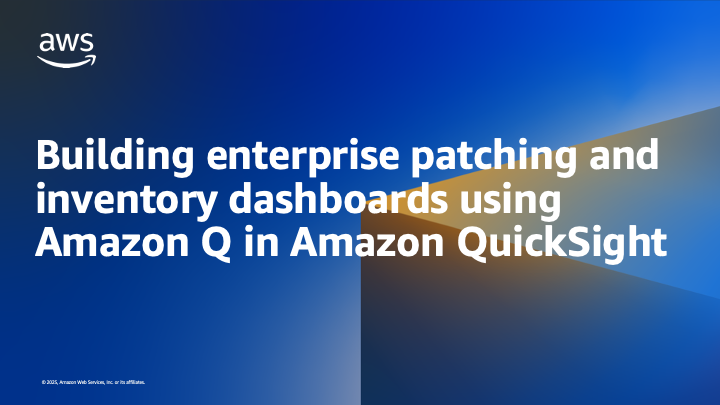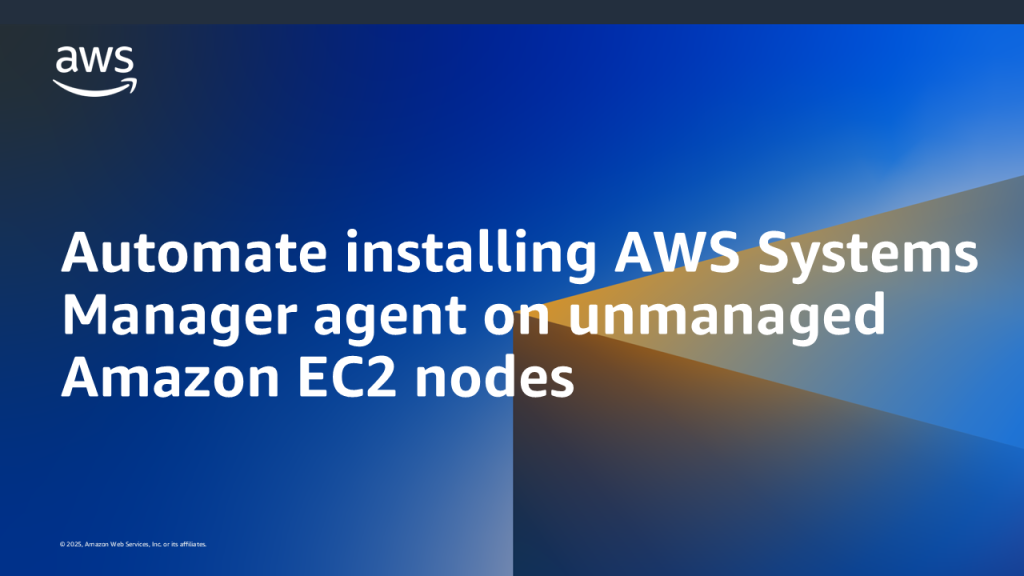AWS Cloud Operations Blog
Category: Centralized operations management
How Indeed scaled Governance across 1,000+ AWS accounts with AWS Trusted Advisor
Indeed is the #1 job site¹ in the world. With 615 million Job Seeker Profiles², people in more than 60 countries across 28 languages come to Indeed to search for jobs, post resumes, and research companies. Over 3.3 million employers use Indeed to find and hire new employees. Supporting this massive scale requires resilient, well-architected […]
Building enterprise patching and inventory dashboards using Amazon Quick Suite
In today’s fast-paced IT environment, monitoring and visualizing patching compliance across your infrastructure is crucial. Traditionally, creating comprehensive patching dashboards in Amazon Quick Sight has been a manual, time-intensive process requiring multiple steps for each visual component. Amazon Quick Suite is an AI-powered assistant that enhances data analysis and visualization capabilities. This blog explores how […]
SAP on AWS – Streamlined Operations and Monitoring
SAP ERP (Enterprise Resource Planning) systems are at the core of many enterprises, supporting a wide range of mission-critical processes, including Procure to Pay, Order to Cash, Production Planning, Financial Accounting, Supply Chain Management (SCM), and Human Capital Management. Given the critical role of SAP ERP, maintaining the stability, security, and efficiency of these ERP […]
Automate installing AWS Systems Manager agent on unmanaged Amazon EC2 nodes
Managing a fleet of AWS resources at scale can be challenging. Organizations rely on multiple solutions to automate tasks, collect inventory, patch instances, and maintain security compliance. Organizations need to access instances without opening inbound ports or managing SSH keys. AWS Systems Manager (SSM) simplifies this by serving as a centralized management solution that supports […]
Manage Custom AWS Config Rules with Remediation Using AWS Config Conformance Pack
Introduction Organizations face unique compliance requirements across their AWS resources and accounts. While AWS Config provides managed rules, many organizations need custom rules and automated remediation capabilities that can scale across their AWS Organization. This blog post demonstrates how to use AWS Config custom conformance pack to deploy and manage custom rules with remediation actions […]
Manage third party applications in Windows Server nodes using AWS System Manager and Chocolatey
System Administrators face a never-ending list of tasks in IT organizations, with one of the most critical being the installation and updating of software packages. This process is essential for maintaining a secure posture across systems. However, as the number of servers grows, manually managing updates becomes increasingly time-consuming and inefficient. The challenge we’re addressing […]
Get Operational Insights Fast with AWS Health and Amazon Q
For organizations with multiple AWS accounts, staying on top of planned AWS service changes and events is critical to keep operations and business running smoothly. Organizations use AWS Health for ongoing visibility into resource performance and the availability of AWS services and accounts, but the volume of notifications from AWS Health can sometimes be overwhelming. […]
Automate Systems Manager patching reports via email and Slack notifications in an AWS Organization
An effective patch management is foremost for maintaining system security, reliability, and compliance across your IT infrastructure. AWS Systems Manager (SSM) provides a comprehensive patching solution, enabling you to automate the deployment of operating system updates to your nodes deployed on AWS, on-premises, and multicloud environments. However, as your organization scales, tracking and reporting on […]
AWS launches enhanced AWS Resource Explorer features for new resource insights
Today, we are excited to announce a significant enhancement to AWS Resource Explorer that delivers a unified view of centralized resource insights and properties from AWS services. With the enhanced Resource Explorer experience, relevant data and insights from multiple AWS services is centralized for supported resource types. Customers use keyword-based search to return a list […]
Troubleshooting AWS Systems Manager patching made easy with Amazon Bedrock’s automated recommendations
Keeping your AWS infrastructure up-to-date and secure is a critical part of maintaining a robust and reliable cloud environment. AWS Systems Manager’s patching capabilities are a powerful tool in this effort, allowing you to automatically apply the latest security updates and bug fixes to your managed nodes, including Amazon Elastic Compute Cloud (EC2) instances, on-premises […]









